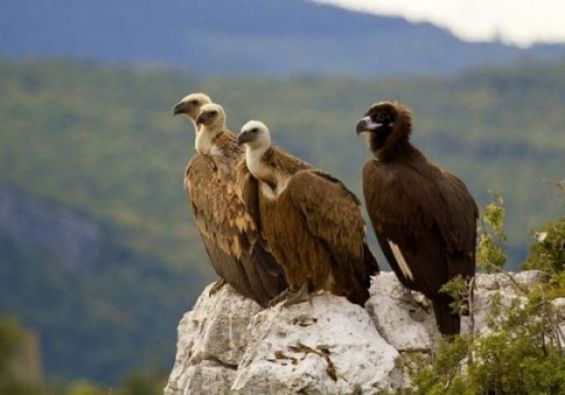Bird remains from Ifri n’Ammar, an archaeological site in Morocco located in the Oriental Rif commune of Afsou, about 50 km south of the city of Nador, are believed to the first substantial fossil record of old world vultures in the Maghreb.
A study published, March 15, examines the remains of at least three species of large aegypiine vulture from early Palaeolithic and Iberomaurusian of Ifri n’Ammar.
Entitled «First substantial evidence for Old World vultures (Aegypiinae, Accipitridae) from the early Palaeolithic and Iberomaurusian of Morocco», the study finds that «none of these species were previously recorded for the Upper Pleistocene of the Maghreb».
«The fossil specimens provide important evidence for the former distribution of Old-World vultures in this area, which is insufficiently known and which changed dramatically during the twentieth century», researchers explained.
Bird fossils manipulated by humans
The remains found in Ifri n’Ammar belong to three different vulture species, the study indicates. Observations showed that «seven remains are referable to A. monachus and 30 specimens can be tentatively referred to G. fulvus». «A distal femur with features characteristic for Gyps clearly exceeds the corresponding bone of G. fulvus in size, and is most likely referable to G. melitensis», researchers found.
The study also indicates that humans used all the bird bones found in Ifri n’Ammar. «All the larger bones found in the Ifri n'Ammar were left by humans and had been manipulated while preparing animals as food, or in the course of other unknown practices», scientists found.

The findings of the study suggest that the distribution of aegypiine vultures in the Maghreb changed during the first half of the twentieth century.
Indeed, «G. fulvus was a common breeding bird in Morocco, Algeria and Tunisia, but witnessed a dramatic decline and local extinction since 1900”.
«Evidence of A. monachusfor the Upper Pleistocene is especially noteworthy, because this species does no longer breed in the Maghreb region. Its former status in North Africa is uncertain, because it was frequently confused with the Lappet-faced Vulture. It formerly bred in Morocco, but apparently was restricted to few colonies in the Tangier Peninsula».
The fossil specimens were discovered during archeological excavations of the rock shelter Ifri n’Ammar. Carried between 1995 and 2015, the excavations were conducted by members of the Institut National des Sciences de l’Archéologie et du Patrimoine (INSAP) and the Commission for the Archaeology of non-European Cultures (KAAK, Bonn) of the German Archaeological Institute DAI.





 chargement...
chargement...













